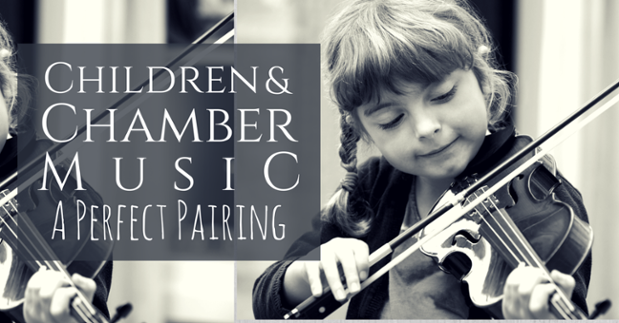
Most children who begin playing a string instrument find themselves – for the first time in their lives – trying to feel rhythm, read notes, search for pitch, and command two hands and ten fingers all at once. That's no small set of tasks for some one who's only recently completed the third grade!
Especially for younger players, one of the best ways to bring together all of the skills necessary for playing a string instrument (other than private lessons) is with ensemble and chamber playing. Even more than orchestral settings, playing in chamber trios and quartets is one of the best ways for a young player to develop their skills, confidence, and a love of playing.
Here are just a few of the benefits that come from this perfect pairing:
Teamwork & Cooperation
Group work, regardless of what the specific activity may be, is one of the best ways to help a child learn how to cooperate with others to accomplish a task. Chamber playing is no exception.
In order for a chamber group to sound its best, all of the players must be able to communicate openly with one another – both verbally and musically. In order to do this each young player has to be willing to work with each of the players in the ensemble.
The Ability to Listen
When playing alone or in the company of a teacher, a young player listens only to the sounds that their instrument is making. Their focus is on the placement of their fingers, the pull of their bow across the string, and the pitch that the combination of the two produces.
While these are all good things, ensemble playing forces a player to listen not only to what their doing, but to the other players in their ensemble. As a result, each player in the group has to learn to actively listen to the other players and adjust their own sound accordingly in order to help the ensemble sound its best.
Connection to the Music
Chamber playing helps players develop their ability to actively listen and adjust, which in turn helps establish a greater connection to the music that's being played.
When playing a piece alone, be it a solo or part of a larger arrangement, it's easy for things like rests and eight notes to become little more than markings on a page. They take on a whole new meaning when it's possible to hear how each of the parts in the ensemble sings over an eight note or dances around a rest.
Responsibility & Incentive to Practice
One of the important characteristics of chamber music is the fact that in order for an ensemble to shine as a whole, each player must be playing at their best.
For many a reluctant practicer, the responsibility that comes with playing in a small ensemble – the responsibility of each player to their chamber mates – serves as incentive to practice.
A Love of Playing
There's something undeniably magical about playing a piece with two or three other musicians. The road to mastering a piece or preparing for a recital can be a long one (for young players and their teachers), but having friends to share that journey with can make all the difference.
The Takeaway...
A love of playing is a love that has the power to shape a lifetime. One of the best ways to help a child find that love of playing is to encourage them to seek opportunities where they get to play along side other musicians.



Leave a comment